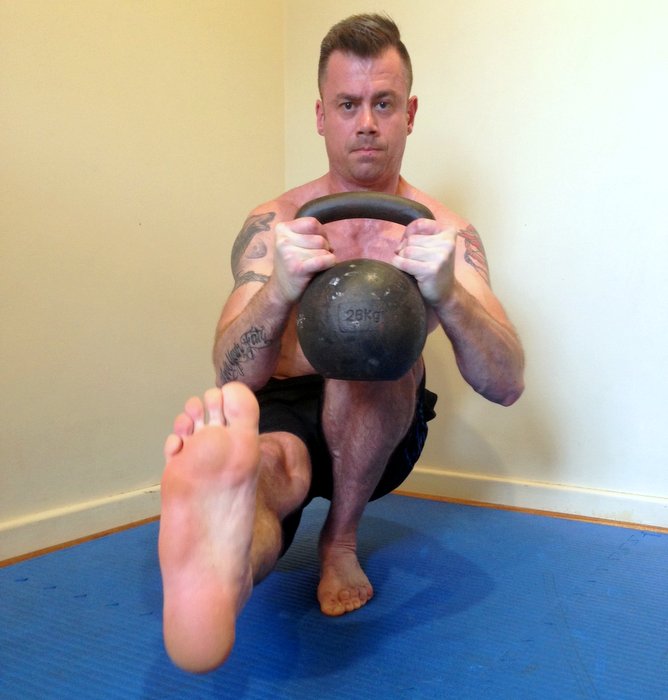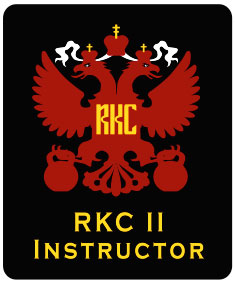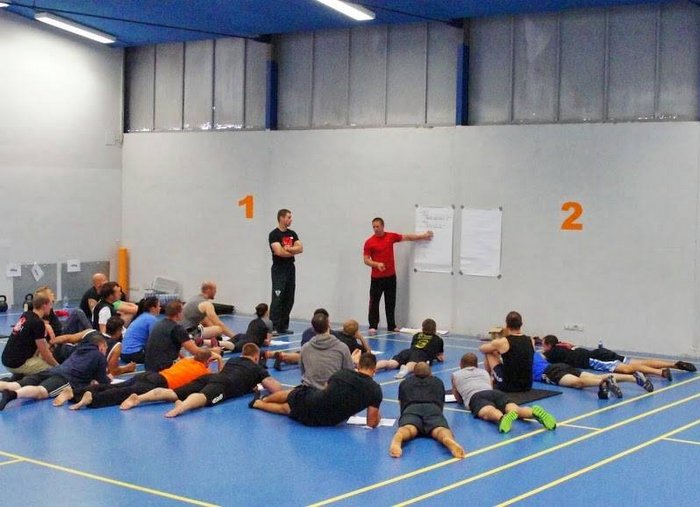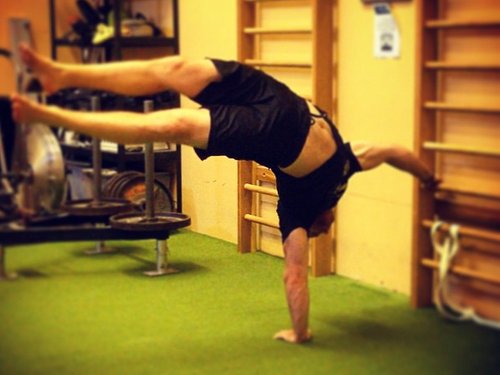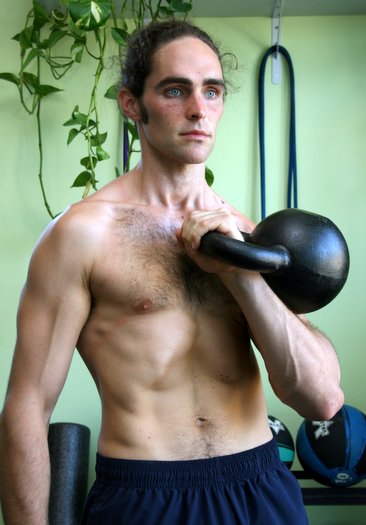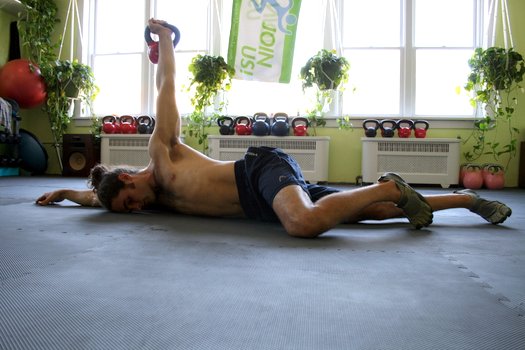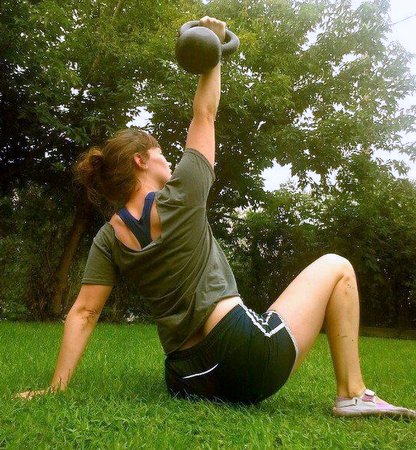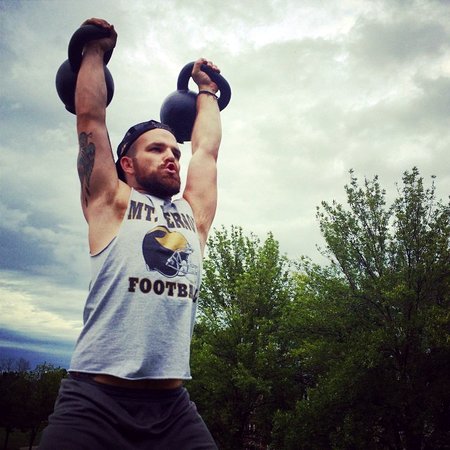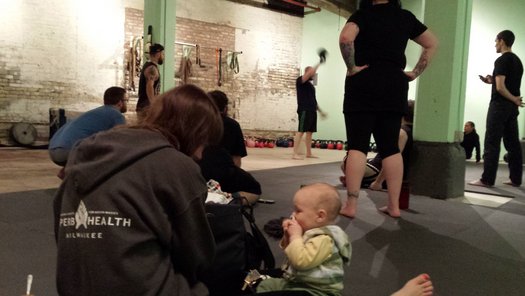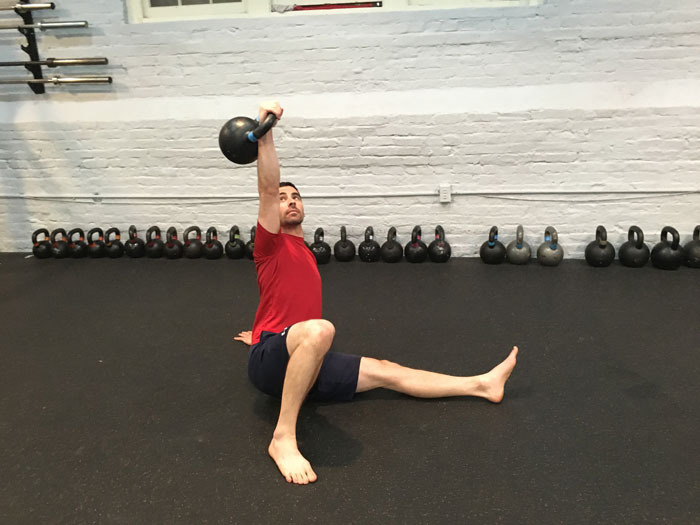
We all know how efficient kettlebell training can be. Kettlebell exercises rapidly elevate your heart rate and require every muscle to work in unison. Kettlebell workouts can combine athleticism and grace, tension and relaxation, and strength and conditioning.
I review my RKC manuals often for workout ideas for my clients and myself. Each time I delve into the manuals again, I always rediscover great workouts and get ideas for programming new ones. Sometimes I use the workouts as they are written, but many times I modify them for a little variety.
The two workouts described below are from my collection of RKC manuals. They’re favorite choices for when I need a short conditioning workout for my remote clients or myself. I also find that these short training sessions work well when I am pressed for time or not feeling 100%.
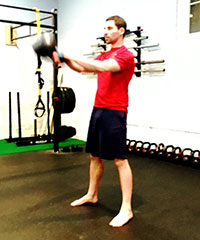 Workout 1:
Workout 1:
- Left arm kettlebell swings for 10 reps, right arm kettlebell swings for 10 reps
- One get-up with the left, one get-up with the right
Repeat for 10 minutes, resting if and when necessary. Increase time as desired.
Workout 2:
- 20 two-handed kettlebell swings
- 1 minute of jumping rope
Repeat for 10 minutes, resting if and when necessary. Increase time as desired.
The two workouts above inspired several variations that I also enjoy adding to my online clients’ programming and my own training. Try the workouts below, and see how you can create your own spin on them.
Workout 3:
- 20 two-handed kettlebell swings
- 5-10 push-ups
- 1 minute of jumping rope
Repeat for 10 minutes, resting if and when necessary. Increase time as desired.

Workout 4:
- Left arm kettlebell snatches for 7 reps, right arm kettlebell snatches for 7 reps
- 1 minute of jumping rope
Repeat for 10 minutes, resting if and when necessary. Increase time as desired.
Workout 5:
- One get-up on the left side
- Left arm kettlebell swings for 10 reps
- One get-up on the right side
- Right arm kettlebell swing for 10 reps
Repeat for 10 minutes, resting if and when necessary. Increase time as desired.
Workout 6:
- One get-up on the left side with five kettlebell snatches at the top
- One get-up on the right side with five kettlebell snatches at the top
Repeat for 10 minutes, resting if and when necessary. Increase time as desired.
Now, you and your clients no longer have an excuse for not having “enough time” to workout.
Stay Strong,
Ryan Jankowitz
****
Ryan Jankowitz, RKC-II Instructor, CK-FMS, is a life-long athlete who can’t imagine sitting behind a desk. He enjoys sharing his passion for fitness and spreading the RKC knowledge. Ryan operates an online fitness coaching service and is available for private kettlebell workshops as well. You can reach him at ryan@rjkettlebell.com or through his website rjkettlebell.com. He also works with clients and teaches kettlebell classes at Fitness on the Run in Alexandria, Virginia. If you’re in the area, visit fitnessontherun.net and come swing some bells with Ryan.
